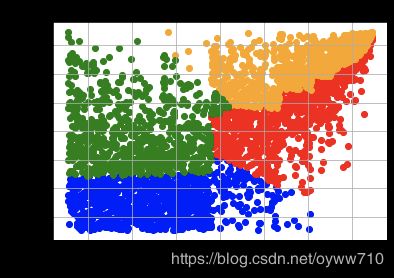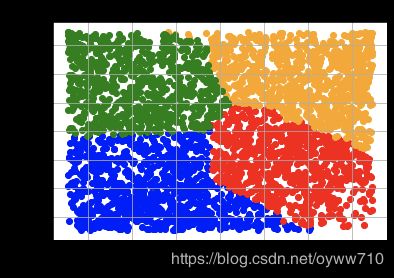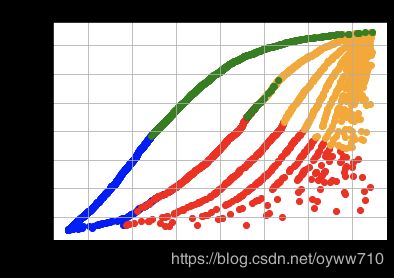09_行销(Marketing)里数据驱动的客户细分
行销(Marketing)里数据驱动的客户细分
- Load packages
- Load the data
- Data Cleaning
- Customer Segmentation via K-Means Clustering
- Selecting the best number of clusters
在营销中,我们经常尝试了解客户群某些子群体的行为。尤其是在有针对性的营销中,营销人员试图以某种方式细分客户群,并专注于每个目标细分市场或客户群。由于目标客户群中那些客户的需求和兴趣与企业的产品,服务或内容保持一致并更好地匹配,因此集中于某些目标客户群可以带来更好的绩效。鉴于当今市场上的竞争,了解客户的不同行为,类型和兴趣至关重要。尤其是在有针对性的营销中,对客户进行了解和分类是形成有效营销策略的重要步骤。通过细分客户群,营销人员可以一次专注于一个客户群。它还可以帮助营销人员一次针对一个特定的受众量身定制营销信息。客户细分是成功进行有针对性的营销的基础,通过该细分,您可以以不同的定价选项,促销和产品放置来针对特定的客户群,从而以最具成本效益的方式吸引目标受众的兴趣。
聚类算法通常在市场营销中用于客户细分。这是一种无监督学习的方法,可以从数据中学习组之间的共性。与监督学习不同,后者有一个目标和一个要预测的标记变量,无监督学习则从没有任何目标或标记变量的数据中学习。在众多其他聚类算法中,我们将在本章中探讨k-means聚类算法的用法。k均值聚类算法将数据中的记录分成预定数量的簇,其中每个簇内的数据点彼此靠近。为了将相似的记录分组在一起,k-means聚类算法试图找到作为聚类中心或均值的质心,以最大程度地减少数据点。
目标方程式如下所示:
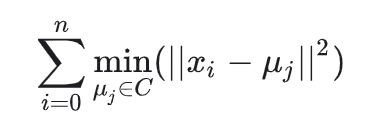
这里n是数据集中的记录数,xi是第i个数据点,C是聚类数,而µj是第j个质心。
使用k均值聚类进行客户细分的一个缺点或困难是,我们需要事先知道聚类的数量。但是,通常我们不知道要创建的最佳群集数是多少。轮廓系数可用于评估并帮助确定针对分割问题的最佳聚类数量。简而言之,轮廓系数衡量的是数据点与其他群集相比与群集之间的距离
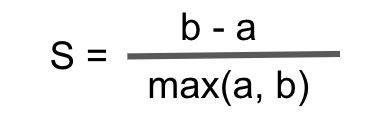
其中b是点与其最接近的簇之间的距离的平均值,而a是同一簇内的数据点之间的平均距离。轮廓系数值的范围是-1至1,其中值越接近1,则效果越好。
在这篇文章里,我会使用一个在线零售的数据集,仍然是来自Kaggle,数据集是OnlineRetail.csv 。我们将使用k-means聚类算法构建客户细分模型。
# This Python 3 environment comes with many helpful analytics libraries installed
# It is defined by the kaggle/python Docker image: https://github.com/kaggle/docker-python
# For example, here's several helpful packages to load
import numpy as np # linear algebra
import pandas as pd # data processing, CSV file I/O (e.g. pd.read_csv)
# Input data files are available in the read-only "../input/" directory
# For example, running this (by clicking run or pressing Shift+Enter) will list all files under the input directory
import os
for dirname, _, filenames in os.walk('/kaggle/input'):
for filename in filenames:
print(os.path.join(dirname, filename))
# You can write up to 5GB to the current directory (/kaggle/working/) that gets preserved as output when you create a version using "Save & Run All"
# You can also write temporary files to /kaggle/temp/, but they won't be saved outside of the current session
/kaggle/input/onlineretail/OnlineRetail.csv
Load packages
import matplotlib.pyplot as plt
import pandas as pd
import numpy as np
from sklearn.cluster import KMeans
from sklearn.metrics import silhouette_score
%matplotlib inline
Load the data
df=pd.read_csv(r"../input/onlineretail/OnlineRetail.csv", encoding="cp1252")
df.head(3)
| InvoiceNo | StockCode | Description | Quantity | InvoiceDate | UnitPrice | CustomerID | Country | |
|---|---|---|---|---|---|---|---|---|
| 0 | 536365 | 85123A | WHITE HANGING HEART T-LIGHT HOLDER | 6 | 12/1/2010 8:26 | 2.55 | 17850.0 | United Kingdom |
| 1 | 536365 | 71053 | WHITE METAL LANTERN | 6 | 12/1/2010 8:26 | 3.39 | 17850.0 | United Kingdom |
| 2 | 536365 | 84406B | CREAM CUPID HEARTS COAT HANGER | 8 | 12/1/2010 8:26 | 2.75 | 17850.0 | United Kingdom |
Data Cleaning
df = df.loc[df['Quantity'] > 0] # remove negative Quantity
df = df[pd.notnull(df['CustomerID'])] # remove missing customer ID
df = df.loc[df['InvoiceDate'] < '2011-12-01'] # remove incomeplete month
df['Sales'] = df['Quantity'] * df['UnitPrice'] # create total sale
customer_df = df.groupby('CustomerID').agg({
'Sales': sum,
'InvoiceNo': lambda x: x.nunique()
})
customer_df.columns = ['TotalSales', 'OrderCount']
customer_df['AvgOrderValue'] = customer_df['TotalSales']/customer_df['OrderCount']
rank_df = customer_df.rank(method='first')
normalized_df = (rank_df - rank_df.mean()) / rank_df.std()
Customer Segmentation via K-Means Clustering
kmeans = KMeans(n_clusters=4).fit(normalized_df[['TotalSales', 'OrderCount', 'AvgOrderValue']])
kmeans
KMeans(algorithm='auto', copy_x=True, init='k-means++', max_iter=300,
n_clusters=4, n_init=10, n_jobs=None, precompute_distances='auto',
random_state=None, tol=0.0001, verbose=0)
kmeans.labels_
array([3, 2, 2, ..., 0, 1, 2], dtype=int32)
kmeans.cluster_centers_
array([[-1.24238492, -0.72361466, -1.04323974],
[ 0.22963624, 0.77161017, -0.57743064],
[ 1.20050352, 0.95015985, 0.93261073],
[-0.04345453, -0.93680013, 0.81681633]])
four_cluster_df = normalized_df[['TotalSales', 'OrderCount', 'AvgOrderValue']].copy(deep=True)
four_cluster_df['Cluster'] = kmeans.labels_
four_cluster_df
| TotalSales | OrderCount | AvgOrderValue | Cluster | |
|---|---|---|---|---|
| CustomerID | ||||
| 12346.0 | 1.728056 | -1.731252 | 1.730186 | 3 |
| 12347.0 | 1.469167 | 1.038751 | 1.366890 | 2 |
| 12348.0 | 0.904512 | -0.101212 | 1.211344 | 2 |
| 12349.0 | 1.247567 | -1.730186 | 1.676917 | 3 |
| 12350.0 | -0.504993 | -1.729121 | 0.365427 | 3 |
| ... | ... | ... | ... | ... |
| 18276.0 | -0.498601 | -0.104408 | 0.372885 | 3 |
| 18277.0 | -1.525632 | -0.103342 | -1.442532 | 0 |
| 18282.0 | -1.638563 | -0.102277 | -1.601275 | 0 |
| 18283.0 | 1.044078 | 1.623648 | -1.193232 | 1 |
| 18287.0 | 0.867224 | 0.675455 | 1.161270 | 2 |
3251 rows ?? 4 columns
plt.scatter(
four_cluster_df.loc[four_cluster_df['Cluster'] == 0]['OrderCount'],
four_cluster_df.loc[four_cluster_df['Cluster'] == 0]['TotalSales'],
c='blue'
)
plt.scatter(
four_cluster_df.loc[four_cluster_df['Cluster'] == 1]['OrderCount'],
four_cluster_df.loc[four_cluster_df['Cluster'] == 1]['TotalSales'],
c='red'
)
plt.scatter(
four_cluster_df.loc[four_cluster_df['Cluster'] == 2]['OrderCount'],
four_cluster_df.loc[four_cluster_df['Cluster'] == 2]['TotalSales'],
c='orange'
)
plt.scatter(
four_cluster_df.loc[four_cluster_df['Cluster'] == 3]['OrderCount'],
four_cluster_df.loc[four_cluster_df['Cluster'] == 3]['TotalSales'],
c='green'
)
plt.title('TotalSales vs. OrderCount Clusters')
plt.xlabel('Order Count')
plt.ylabel('Total Sales')
plt.grid()
plt.show()
plt.scatter(
four_cluster_df.loc[four_cluster_df['Cluster'] == 0]['OrderCount'],
four_cluster_df.loc[four_cluster_df['Cluster'] == 0]['AvgOrderValue'],
c='blue'
)
plt.scatter(
four_cluster_df.loc[four_cluster_df['Cluster'] == 1]['OrderCount'],
four_cluster_df.loc[four_cluster_df['Cluster'] == 1]['AvgOrderValue'],
c='red'
)
plt.scatter(
four_cluster_df.loc[four_cluster_df['Cluster'] == 2]['OrderCount'],
four_cluster_df.loc[four_cluster_df['Cluster'] == 2]['AvgOrderValue'],
c='orange'
)
plt.scatter(
four_cluster_df.loc[four_cluster_df['Cluster'] == 3]['OrderCount'],
four_cluster_df.loc[four_cluster_df['Cluster'] == 3]['AvgOrderValue'],
c='green'
)
plt.title('AvgOrderValue vs. OrderCount Clusters')
plt.xlabel('Order Count')
plt.ylabel('Avg Order Value')
plt.grid()
plt.show()
plt.scatter(
four_cluster_df.loc[four_cluster_df['Cluster'] == 0]['TotalSales'],
four_cluster_df.loc[four_cluster_df['Cluster'] == 0]['AvgOrderValue'],
c='blue'
)
plt.scatter(
four_cluster_df.loc[four_cluster_df['Cluster'] == 1]['TotalSales'],
four_cluster_df.loc[four_cluster_df['Cluster'] == 1]['AvgOrderValue'],
c='red'
)
plt.scatter(
four_cluster_df.loc[four_cluster_df['Cluster'] == 2]['TotalSales'],
four_cluster_df.loc[four_cluster_df['Cluster'] == 2]['AvgOrderValue'],
c='orange'
)
plt.scatter(
four_cluster_df.loc[four_cluster_df['Cluster'] == 3]['TotalSales'],
four_cluster_df.loc[four_cluster_df['Cluster'] == 3]['AvgOrderValue'],
c='green'
)
plt.title('AvgOrderValue vs. TotalSales Clusters')
plt.xlabel('Total Sales')
plt.ylabel('Avg Order Value')
plt.grid()
plt.show()
Selecting the best number of clusters
for n_cluster in [4,5,6,7,8]:
kmeans = KMeans(n_clusters=n_cluster).fit(
normalized_df[['TotalSales', 'OrderCount', 'AvgOrderValue']]
)
silhouette_avg = silhouette_score(
normalized_df[['TotalSales', 'OrderCount', 'AvgOrderValue']],
kmeans.labels_
)
print('Silhouette Score for %i Clusters: %0.4f' % (n_cluster, silhouette_avg))
Silhouette Score for 4 Clusters: 0.4213
Silhouette Score for 5 Clusters: 0.3823
Silhouette Score for 6 Clusters: 0.3663
Silhouette Score for 7 Clusters: 0.3860
Silhouette Score for 8 Clusters: 0.3650
In our case, of the five different numbers of clusters we have experimented with, the best number of clusters with the highest silhouette score was 4
